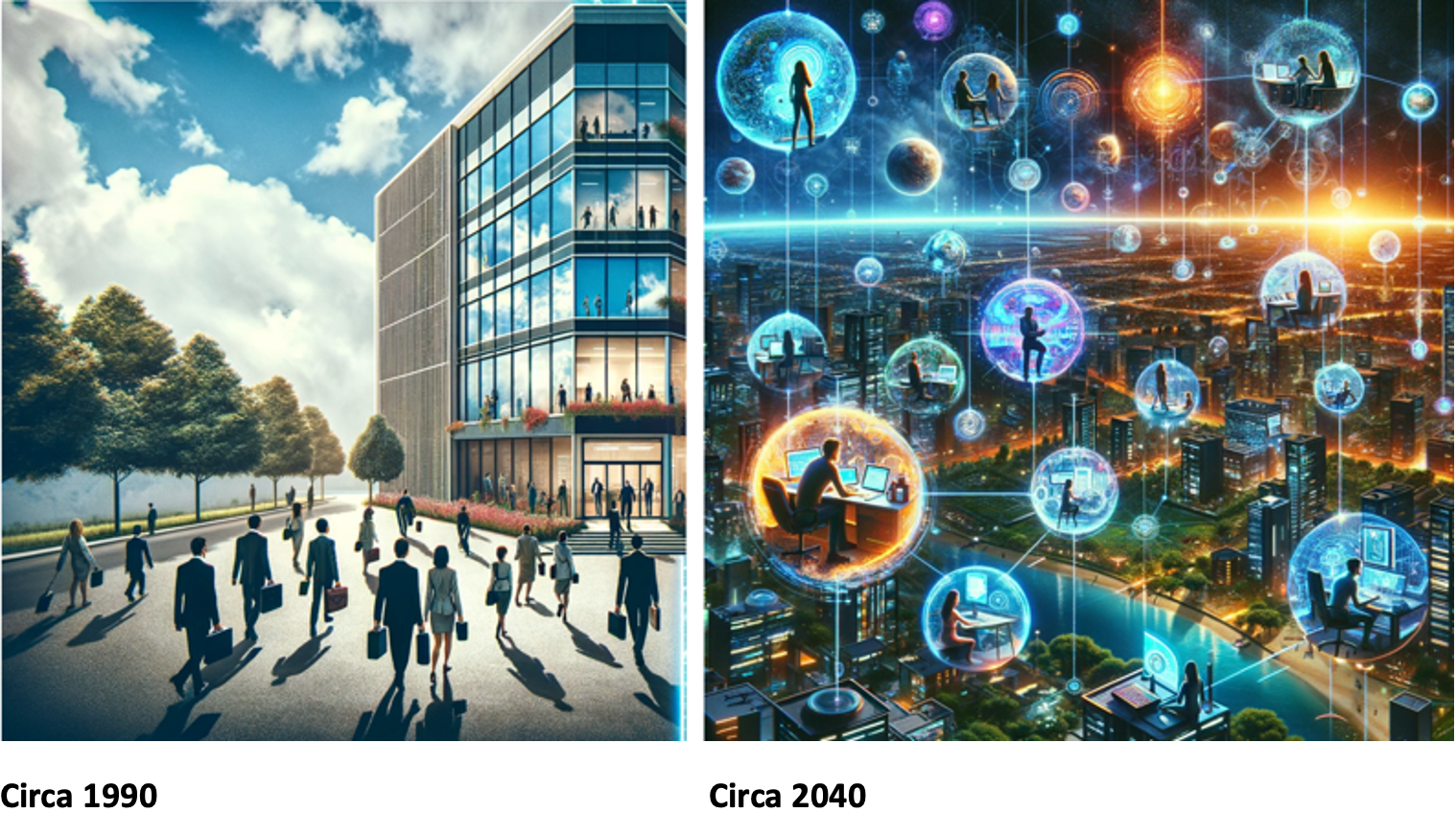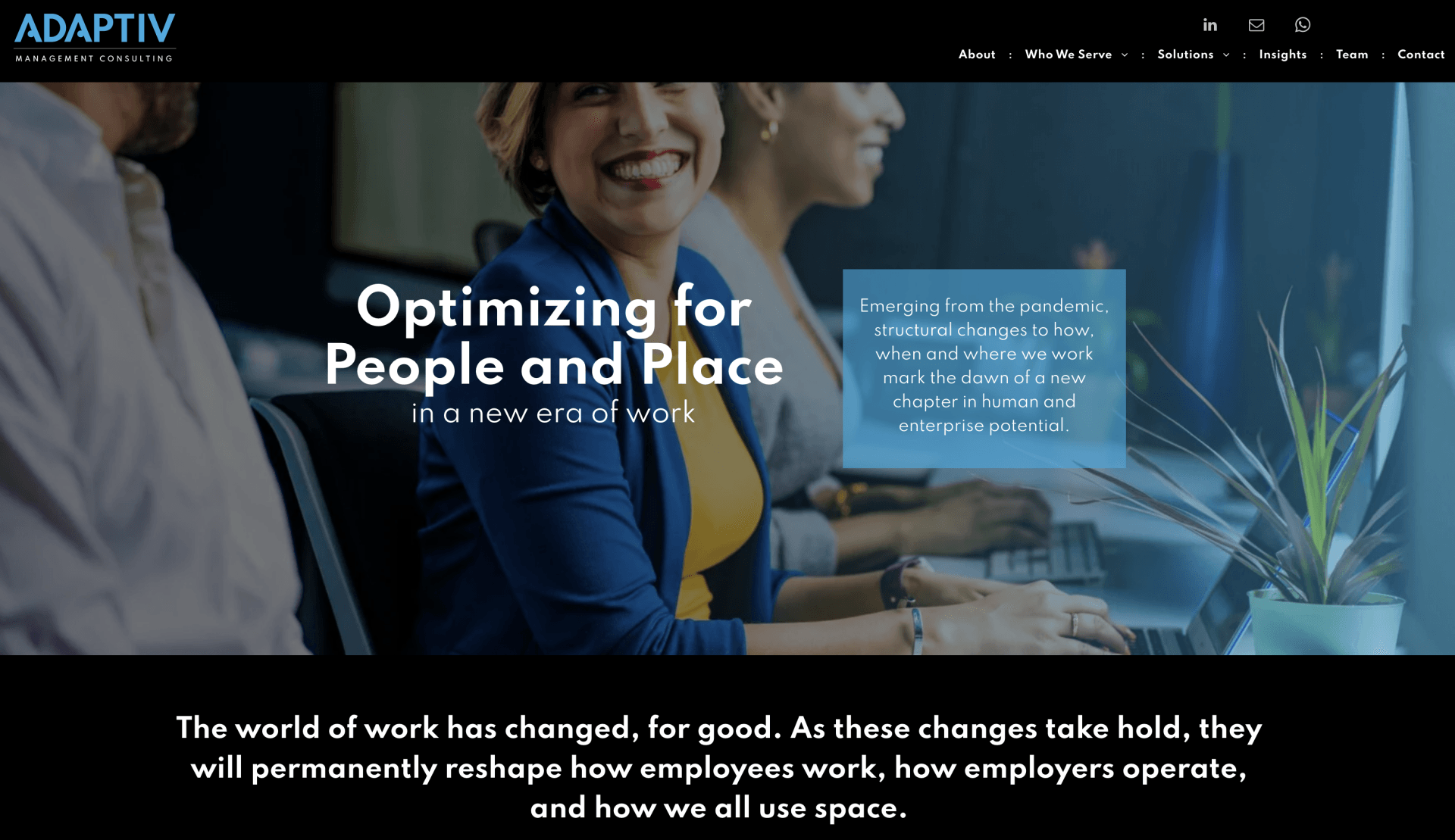The Missing Framework: Why Current Workplace Solutions Fall Short of Understanding Work Evolution
As organizations navigate post-pandemic workplace transformation, billions of dollars are being invested in workplace technology solutions. Yet most enterprises report difficulty translating data into actionable insights about how work is actually evolving. Current solutions address symptoms rather than causes, focusing on operational metrics rather than developing systematic understanding of workplace change. We propose that a fundamental shift in approach is needed—from measurement to learning.

The Point Solution Problem
Today's workplace technology landscape is dominated by specialized solutions: space utilization sensors, desk booking platforms, employee experience surveys, and access management systems. Each provides valuable operational data within their domain, but organizations struggle to synthesize insights across these disparate data streams.
Our analysis of leading workplace technology vendors reveals a consistent pattern: solutions optimized for operational efficiency rather than strategic understanding. While these tools answer questions like "How many people used Conference Room A?" or "What's our average desk utilization?", they provide limited insight into deeper questions about how work itself is changing.
More fundamentally, these solutions reflect a fragmented approach to workplace design—one that mirrors the organizational silos that create them. Technology teams optimize for technical metrics, facilities teams focus on space efficiency, HR teams measure employee satisfaction, and operations teams track utilization. This functional specialization, while individually logical, fails to address the inherently cross-functional nature of effective workplace ecosystems.
The Need for Intelligent Design and Systems Thinking
Effective work ecosystems don't emerge accidentally—they require intelligent design grounded in systems thinking that considers the complex interactions between places, activities, time, and enabling infrastructure. Yet most workplace strategies treat these elements in isolation, optimizing individual components without understanding their interdependencies or feedback loops.
Systems thinking recognizes that workplace effectiveness emerges from the relationships between elements, not from the elements themselves. A perfectly optimized conference room may fail if it's poorly integrated with booking systems, located inconveniently relative to work patterns, or designed without considering the temporal rhythms of the organization. Similarly, advanced collaboration technology may underperform if deployed without understanding how it affects spatial usage patterns or cultural dynamics.
Intelligent workplace design requires moving beyond linear cause-and-effect thinking to understanding dynamic interactions, feedback loops, and emergent properties. This means recognizing how spatial design affects temporal patterns, how technology choices influence collaboration behaviors, and how organizational activities shape infrastructure requirements. Most importantly, it requires understanding that these relationships are dynamic and must be continuously observed and refined.
The cross-functional imperative becomes clear through a systems lens: workplace effectiveness depends on integration across domains that typically operate independently. No single function possesses the complete perspective necessary to understand the system dynamics that determine workplace outcomes.
The Foundational Questions
Intelligent workplace design begins with understanding three fundamental dimensions that remain constant even as their expressions evolve:
Places: Where value is created and work gets done
Activities: What work is being performed and how value is delivered
Time:
When work happens and how temporal patterns shape outcomes
These foundational elements interact with rapidly changing enabling infrastructure—the evolving platforms of methods, tools, spaces, and systems through which work gets expressed.
The Crossfunctional Imperative
Perhaps most critically, developing integrated workplace understanding requires breaking down the functional silos that typically govern workplace decisions. The most effective workplace strategies emerge from cross-functional collaboration that brings together diverse perspectives:
- Real Estate and Facilities contribute understanding of spatial dynamics and infrastructure constraints
- Technology Teams provide insight into digital infrastructure capabilities and limitations
- Human Resources offers perspective on employee experience and organizational culture
- Operations brings understanding of workflow patterns and efficiency requirements
- Business Strategy provides context about organizational goals and performance metrics
When these functions work in isolation, workplace solutions inevitably reflect the limitations of single-domain, linear thinking. When they collaborate systematically through a systems approach, organizations can develop more sophisticated understanding of how work ecosystems actually function, evolve, and create emergent outcomes.
From Measurement to Understanding
Current approaches focus heavily on measurement: tracking utilization, counting occupancy, and surveying satisfaction. While measurement provides necessary data, it falls short of developing the kind of integrated understanding that enables organizations to adapt effectively to changing conditions.
What's missing is a systematic approach to:
- Recognizing patterns across multiple dimensions of work
- Synthesizing insights from diverse data sources
- Generating adaptive strategies based on evolving understanding
- Creating feedback loops that improve organizational learning over time
The Learning Gap
Organizations invest heavily in workplace data but struggle to develop institutional wisdom about how their work environments should evolve. This suggests a fundamental gap between data collection and insight development—a gap that point solutions cannot bridge alone.
The challenge isn't just technical; it's conceptual. Most workplace technology assumes that better measurement leads to better decisions. But measurement without framework leads to data abundance and insight poverty.
Implications for Workplace Strategy
This analysis suggests several implications for organizations developing workplace strategies:
- Systems Design over Component Optimization:
Rather than optimizing individual systems, focus on intelligent design of integrated work ecosystems with attention to relationships, feedback loops, and emergent properties.
-
Cross-functional Collaboration over Siloed Solutions:
Bring together diverse organizational functions to develop a comprehensive understanding rather than domain-specific metrics.
- Pattern Recognition over Metrics:
Develop capability to recognize emerging patterns rather than just tracking established metrics.
- Learning Systems over Reporting Systems:
Build systems that enhance organizational understanding, not just organizational reporting.
- Dynamic Strategy over Static Planning: Create adaptive approaches that evolve with changing work patterns rather than fixed implementations.
The current workplace technology landscape, while operationally valuable, lacks frameworks for developing an integrated understanding of work evolution. More fundamentally, it reflects the siloed thinking that prevents organizations from designing truly effective work ecosystems.
Organizations that develop systematic approaches to workplace learning—combining intelligent systems design with cross-functional collaboration—will be better positioned to adapt to continuing workplace transformation. This requires moving beyond measurement to insight generation, beyond functional optimization to systems intelligence, and beyond static solutions to dynamic understanding of emergent workplace behaviors.
This represents both a significant opportunity and a pressing need. As work continues to evolve rapidly, the organizations that thrive will be those that develop superior capability to understand and adapt to change through intelligent design and cross-functional collaboration, rather than simply measure its effects through disconnected systems.
The authors are developing research into systematic approaches for workplace understanding and organizational learning. Further research is planned to explore practical frameworks for implementing these concepts in enterprise environments.









